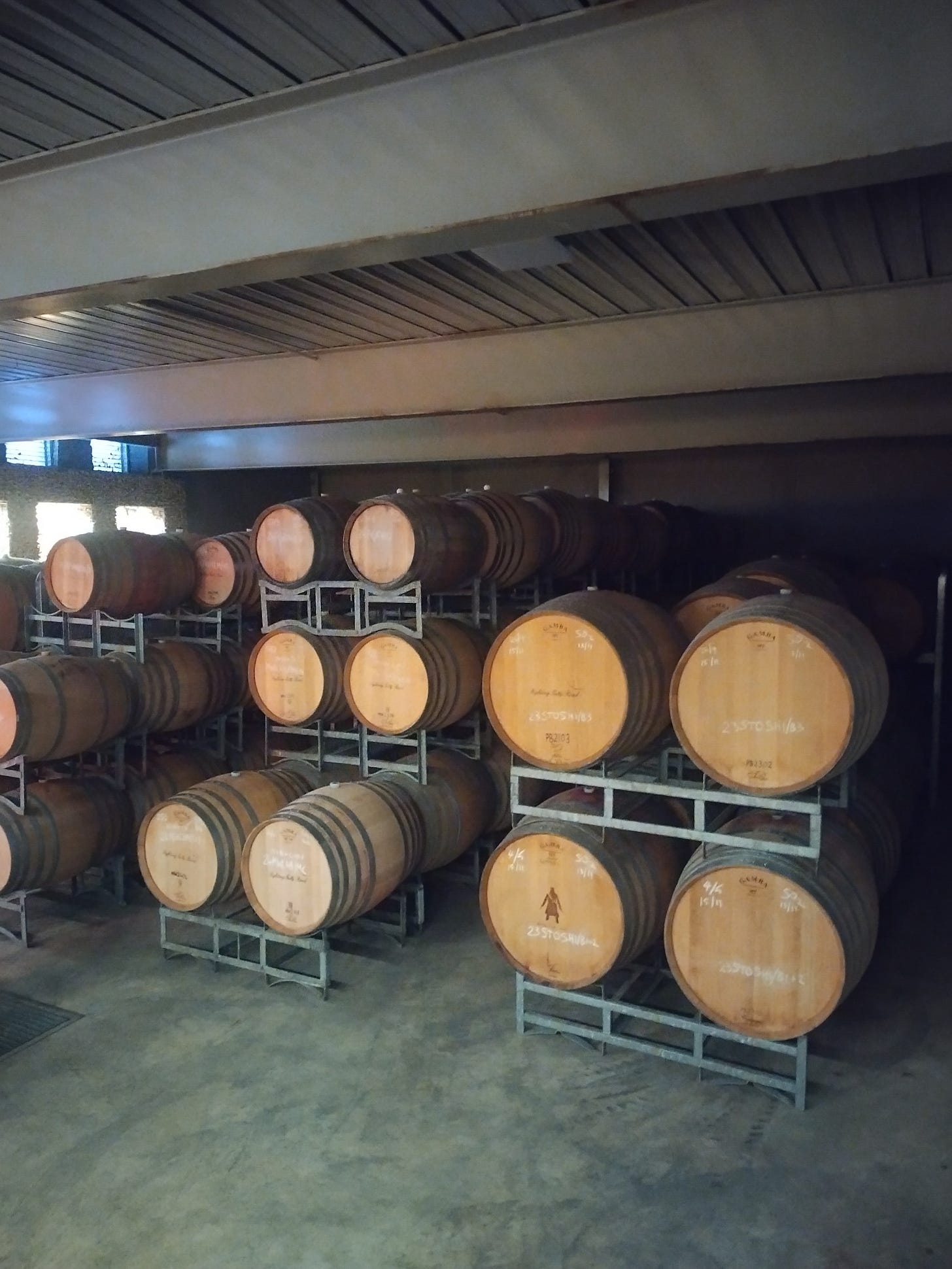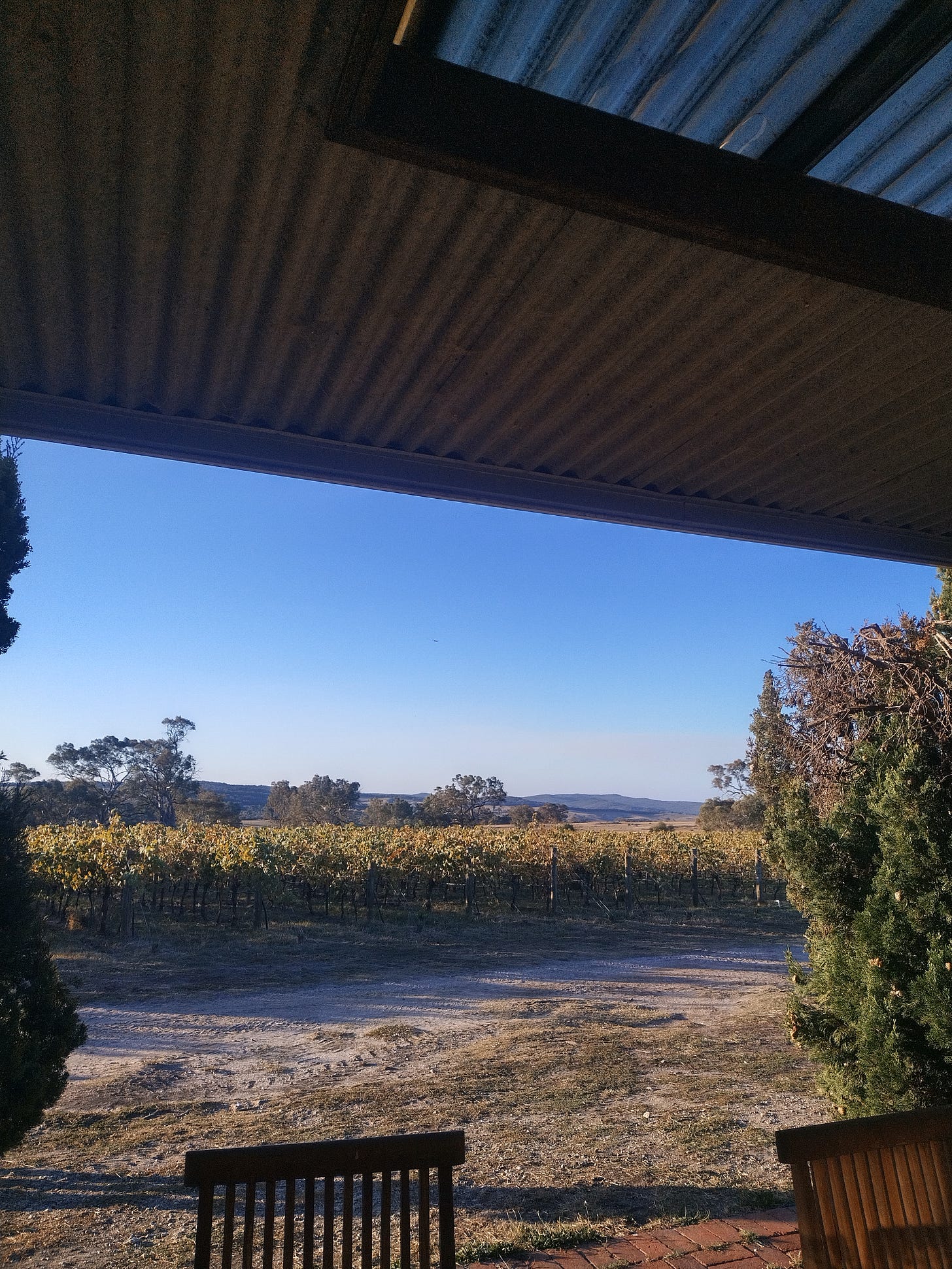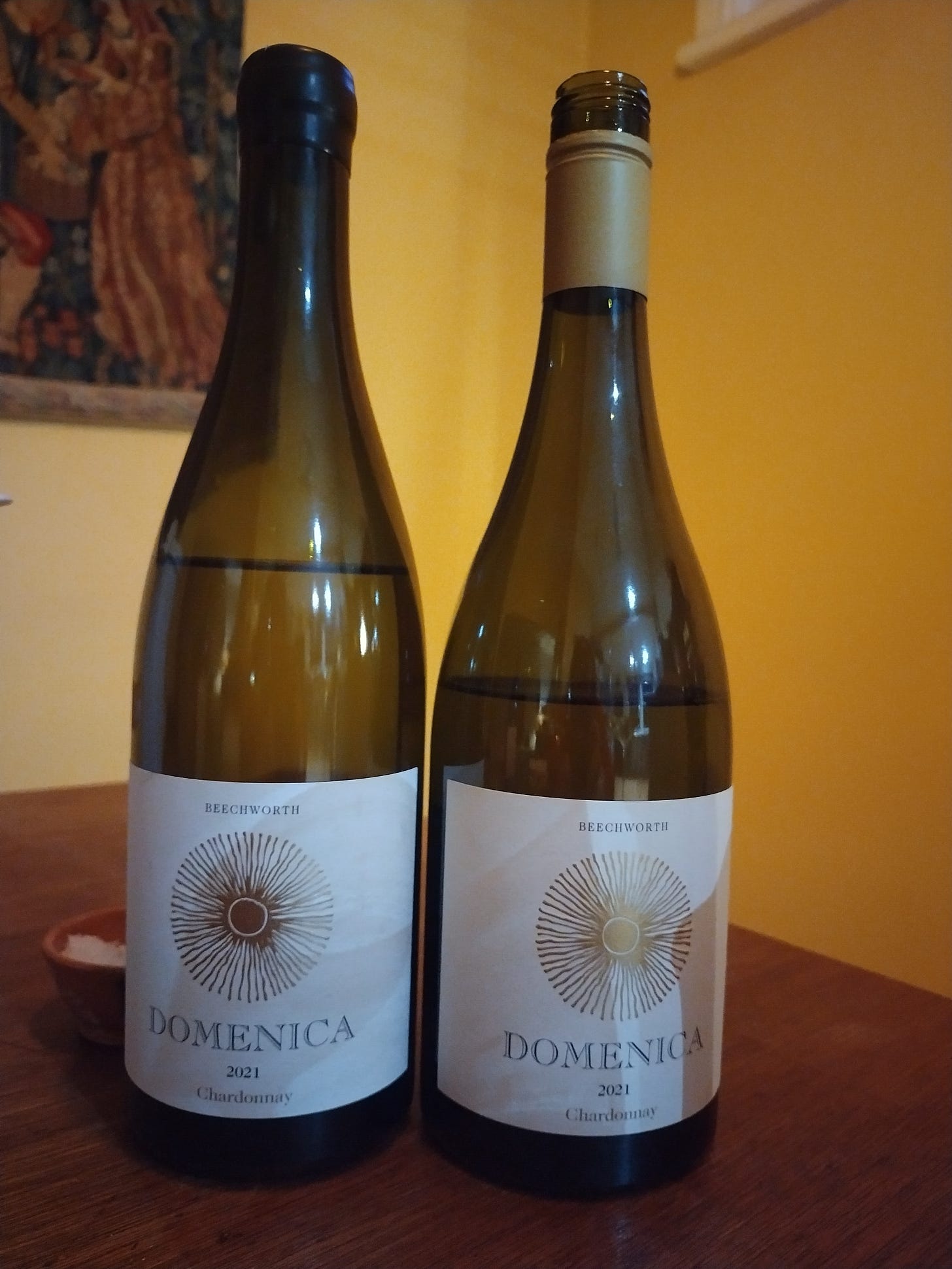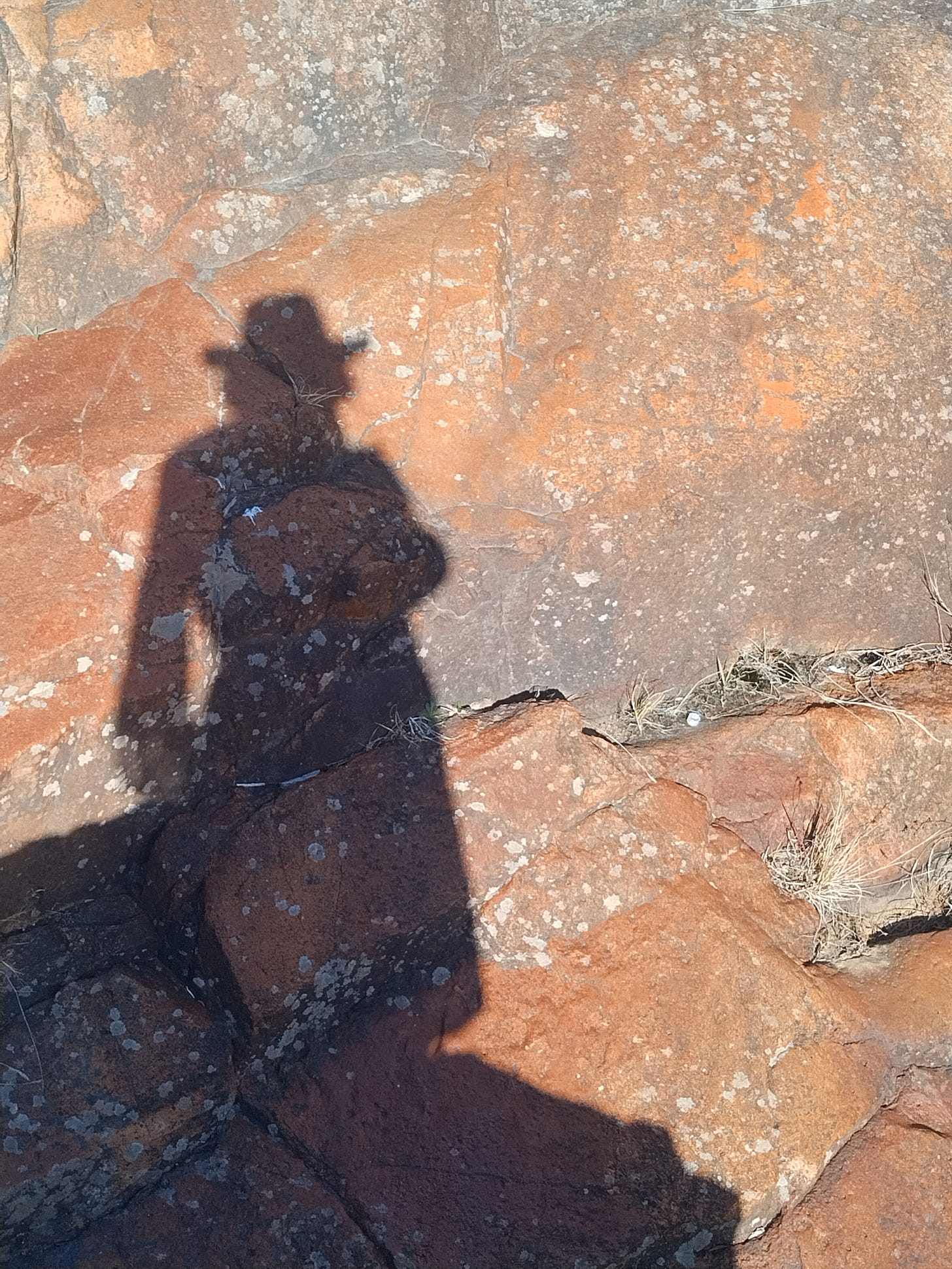At 6:30, the sun hasn't risen yet. There’s a gentle hush in the air, my nose is cold and my cheeks are flushed. The sky is turning violet, the same gentle violet you see in a Degas painting. As I leave the cityscape, the roads become quieter. I pass town names which I’ve never heard of; Violet Town, Porepunkah, Euroa. My destination is a place familiar only on wine list pages: Beechworth
The barrel room at Fighting Gully Road
Hospitality: Little Frances
Navigating my way cautiously up the winding driveway, the sun is now high in the sky illuminating grassy fields and vineyards which glimmer in and out of view. My little suburban car makes a fuss at the gravel but pushes on to the summit where I meet Erin, winemaker at Little Frances. We’ve been emailing for weeks, and I find her much slighter and younger than I expected— she has a determined face, a matter-of-fact friendliness that says “don’t be silly, just let me look after you” which is how I end up staying with her and her partner Pete (of Domenica wine) for the duration of my visit.
Erin guides me through the winery, her focus unwavering despite the breathtaking views from the hilltop estate. There is so much space here, the eye can wander endlessly towards the horizon. We descend into a cool, dimly lit chamber beneath the main structure where barrels line the walls, piled atop each other. These hold wines in various stages of fermentation. It's post-harvest, and the weariness of every winemaker I encounter is palpable. They speak in hushed tones about the progress of fermentations, the whether wines have undergone malo, and apologize for the tightened expressions of wines fresh from sulfuring.
In the barrel room, conversation drifts effortlessly from cooperage techniques to impromptu demonstrations, with Erin scaling the barrels to extract a sample of Chardonnay from the topmost casks—not for the first time this trip will I be bewildered by this feat of agility and trust in the sturdy barrels. As we return upstairs to sample more wines, our discussions meander from winemaking philosophies to personal anecdotes; Erin spent some time in the US making, amongst other wines, beautiful semillons. She set up in Beechworth a few years ago and is well-poised to offer insights on the local haunts and history.
A Nascent Region
Beechworth is the smallest GI in Australia. There are two distinct soil types: Granite, which produces finessed and elegant wines, and shaly slate which offers more power and body. Around two dozen winemakers have built their livelihoods on this soil. The region is less than a lifetime old; many winemakers remember the region as a collection of visionaries rather than anything highlighted on an Australian wine guide.
Sorrenberg and Giaconda are icons of Beechworth, home to characters who have become pillars of this nascent wine scene. Barry of Sorrenberg is fondly spoken of by every winemaker, and my tour of the winery shows a combination of clever innovations and old world charm. Other folks like Keppel from Savaterre, Julian from Castagnia, and Stephen Morris of Pennyweight also boast a long history in the region. Newer producers like Little Frances are making the most of this emerging community. I’m constantly told that the quality of the soils and the demanding viticulture make it impossible to produce wine on a commercial scale. It is a region almost entirely of boutique wineries, most of which operate in the realm of organics and biodynamics. There is a ubiquitous dedication to quality over quantity.
Seasonality, Swims, Sealing Wine
During my stay with Erin and Pete, I'm initiated into the rhythms of winemaking life, where the ebb and flow of seasons dictate not only the vineyard's vitality but also the daily rituals of its stewards. Producers who also grow and tend to their vines (rather than buying in grapes) must be intensely attuned to the weather, from daily challenges like rain and sun, to the flow between seasons. This bleeds into the rituals of daily life. In an area where non-local produce is more than a trip to the Mediterranean Wholesaler (much to Erin’s lament it is impossible to find real parmesan here), inhabitants must rely on seasonal, local food.
The first night I say with Pete and Erin, they make fresh chestnut agnolotti for me. Eggs are from their chickens, local semolina flour, bronze chestnuts from across the road and sage pulled from the community garden. They make the pasta by hand— the little dumplings are plump and earthy. I feel very warm whilst I eat them.
the gorge
my morning swimming spot
Dominating Beechworth's picturesque facade is The Gorge, a breathtaking expanse that unfolds with unsuspecting grandeur as you traverse its sandy bridge. It's a discovery that leaves me wide-eyed and spellbound, a moment of awe amidst my sleepy-eyed arrival which sees me nearly total the car as I try sneak another look. I trek down to the gorge on my first morning and enjoy a frigid dip the the shallow pools that scatter the paths.
When I visit Keppel at Savaterre, he is worried that I’ll be cold on the golden and exposed mountaintop that is his winery but when I confess to my morning swim his eyebrows disappear into his hairline. We spend the rest of my little visit sitting outside and, rather than running through barrel tastings, we enjoy some Pinot and Chardonnay leftover from his dinner last night. His wife, Nobue, who was a sommelier in Sydney, brings out delicious hors d’ouvres of salmon rillette and fresh herbs. They are divine.
The cold does eventually get to me. My day unfolds in a tapestry of sensory delights, from the golden vistas of Savaterre, to the warm hospitality of Pennyweight, and Castagnia. Each encounter offers a glimpse into the soul of the region, and my mind is rolling with stories that linger long after glasses are emptied.
My view from Julian's patio at Castagnia
The Last Dinner
Back home, Erin is cooking something that smells like warmth. Her Mapo Tofu recipe is a regular in their house— I make sure to take a picture from the recipe book (“no Taste-dot-com recipes here!”). It is gingery, spicy, and earthy. Erin tells me that with the cold weather they wanted something warm. I get second helpings and lament there isn’t more to go around.
As the night unfolds, conversations veer towards the enigmatic realm of wine closures, where screwcaps and corks become protagonists in a lively debate. Pete determinedly brings two wines to the already full dinner table; “I did some experimenting a couple years ago” he explains. “I wanted to see how much of a difference it really made.” We open the two wines, 2021 Domenica Chardonnays bottled on the same day under screwcap and cork. The difference is humbling. The screwcap wines show slightly more reduction and the cork closure wine seems somehow earthier and richer. “Wines bottled under screwcap get screw-cappy. They’re more susceptible to TDN which I like in old Rieslings but not in my young chardonnays” Pete explains. TDN is responsible for kerosene aromas in aged Riesling.
Another bottle is brought to the table, a Chenin they bought a couple days ago that wasn’t very impressive. “This is a great example of how wines get that cappy taste” Erin offers me a taste. We try and spit the chenin, and the couple remain unmoved by it.
Our discussion about closures, TCA, and TDN goes long into the night. The dinner table piles up with souvenirs of the conversation: bottles, maps, book recommendations, empty plates, and a full spittoon. I go to bed feeling slightly woozy and very contented.
two wines, under screwcap and cork
Slowing Down
This morning, I'm in Melbourne. I make my way to the market and try pay attention to what is in season, and to the people I'm buying from. By the time I get home, my basket is heaving with pomegranates, custard apples, figs, chestnuts, pumpkins, zucchini, and cheeses. My wine shelf is overflowing now with Beechworth wines. Behind each label now is a story, a face, a name. I'm excited to open them over the coming years and reminisce about the people who welcomed me into their homes, communities, and places of labour. To relive the stories, and reconnect with the land which enchanted me, and to which I must return.









Brilliantly written as always. I love your stories and I’m now inspired to cook with fresh local ingredients which is in itself a miracle.